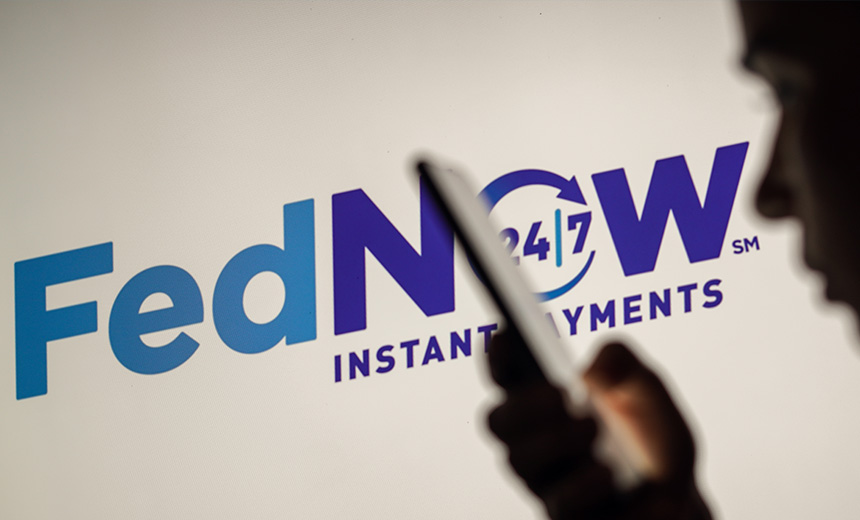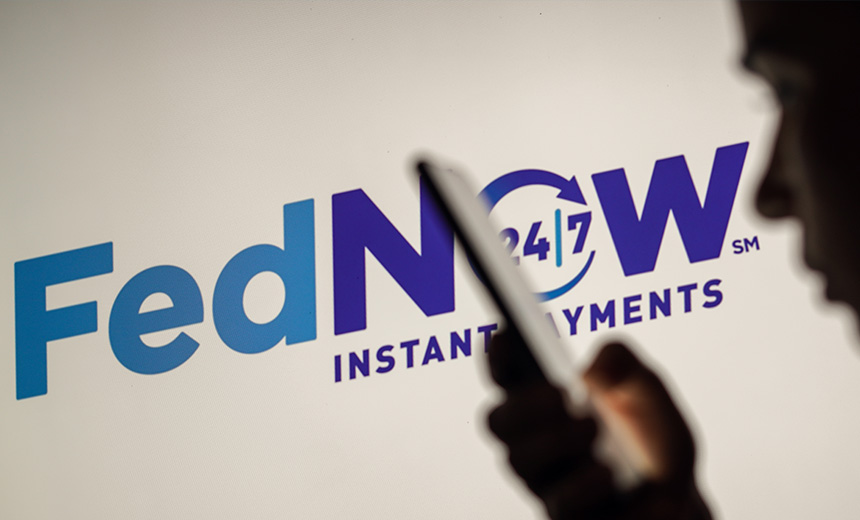Source: www.databreachtoday.com – Author: 1
Finance & Banking
,
Fraud Management & Cybercrime
,
Industry Specific
New Payment Rail Enrolled 800 FIs, But Transaction Volumes Lag Expectations
Suparna Goswami (gsuparna) •
July 12, 2024

In July 2023, the U.S. payments industry marked a major milestone with the launch of FedNow, the Federal Reserve’s instant payment service for depository institutions. This long-anticipated development promises to revolutionize real-time payments across the country.
See Also: Defending Financial Services from Cyberattacks
But the biggest obstacle for FedNow is that hardly anyone is using it.
On the one-year anniversary of its launch, FedNow is a bit of a mixed bag. On one hand, it has exceeded expectations in getting banks on board and keeping fraudsters at bay. On the other hand, it’s lagging behind in transaction volume, which is a key measure of its real-world impact. And while the low fraud rate is impressive, there’s a twist to that story.
Let’s start with the good news first. While there have been no formal announcements, it is an open secret that roughly 800 banks have signed up for FedNow – an impressive number given that a similar service in the form of RTP by The Clearing House already existed in the market.
Despite the high number of registrations and almost no occurrences of fraud, why hasn’t FedNow shown a corresponding rise in transaction volumes? There are many reasons, but the primary one is that out of the 800 banks on the network, only 15% are in a mode that allows them to send payments. The rest are in receive-only mode, meaning customers can receive money through FedNow but not send money.
“We need those financial institutions who are connecting to receive-only to progress to send, and then progress into receiving and sending a request for payment transaction messaging as well,” said Reed Luhtanen, executive director of the U.S. Faster Payments Council.
Currently, the typical mindset for most U.S. banks is to quickly connect to a payment rail. Many have joined the FedNow service as receive-first participants with plans to enable sending when they are ready. There is a misconception that once a financial institution enables sending, they may be overwhelmed by transaction volume and potentially lose control over their fraud risk management abilities. FedNow states in a blog post that it provides financial institutions significant control and the ability to take a measured approach while ramping up their schedules.
Driving Up Use
Many factors could drive up the use, including experience and adoption of standards. Also, ensuring a consistent user experience across financial institutions and across different payment flows should be a priority.
For example, when a customer makes an ACH payment, they know what to expect regardless of who they’re sending it to. The institution they’re using can help them through that process. This makes the communication between sender and receiver easier, and it makes it easier to familiarize customers with payment types and flows.
Also, there is no standardization for handling exceptions. Other payment types that have flourished in the U.S. have well-defined processes for handling exceptions. “Whether those are related to fraud, mistake, whatever it might be, FIs know what they can expect. It breeds a sense of trust in those payment types when you know what those rules are,” Luhtanen said.
For now, the payment rail has not reported any incidents of fraud. But that is more of a function of low attack surface rather than exceptional anti-fraud controls. Currently, fraudsters are not inclined to invest their efforts in this payment rail when a majority of banks have not enabled the option to send money. But this gives FedNow enough time to prepare for evolving fraud tactics.
Creating Products
It’s one thing for banks to be connected, but now they need to create experiences that enable the users of payments, customers, small businesses, enterprises and fintechs to be able to use instant payments.
Star One Credit Union created a product called Instant Pay that enables the credit union’s members to go online and initiate an instant payment over FedNow. “This is a great example of a product that was built by a financial institution that enabled the end user to actually use the capability of FedNow,” said Peter Tapling, board member of the U.S. Faster Payments Council.
Tapling highlighted another issue with creating instant payment products in the U.S. The back-end systems of banks are built assuming overnight batch processing of payments. “Today, the customer systems update every night. So, when you make a payment today, you see your payment in the application tomorrow,” he said.
Financial institutions need to shift their internal systems from batch to a real-time mindset. They have to make their systems ISO 20022 aware, Tapling said.
The shift in payments is a journey, and it’s good that the Federal Reserve is part of it now. As financial institutions adapt and create innovative products, the vision of seamless real-time payments can become a reality. For now, it is worth celebrating a successful year for FedNow.
Original Post url: https://www.databreachtoday.com/fednows-first-year-mixed-bag-achievements-challenges-a-25758
Category & Tags: –
Views: 1




















































